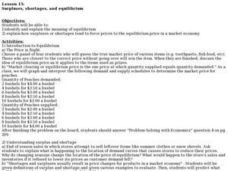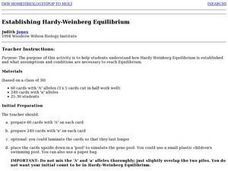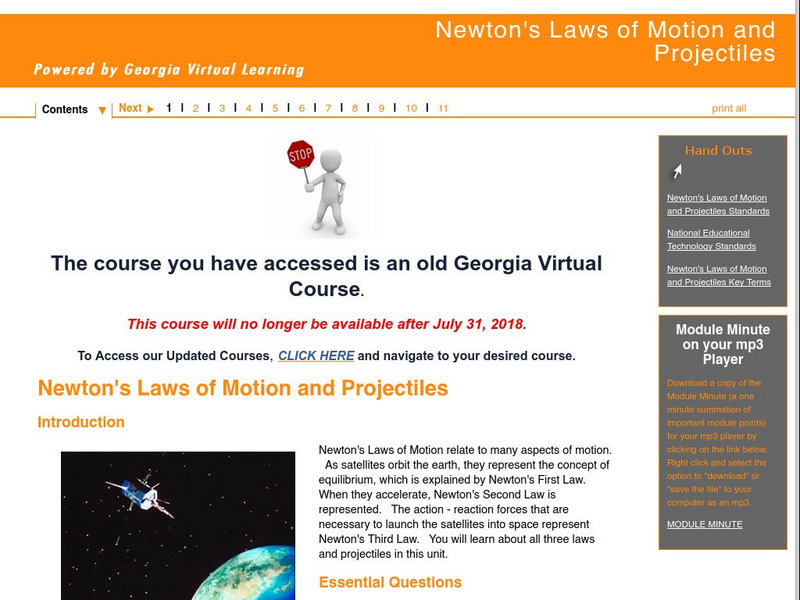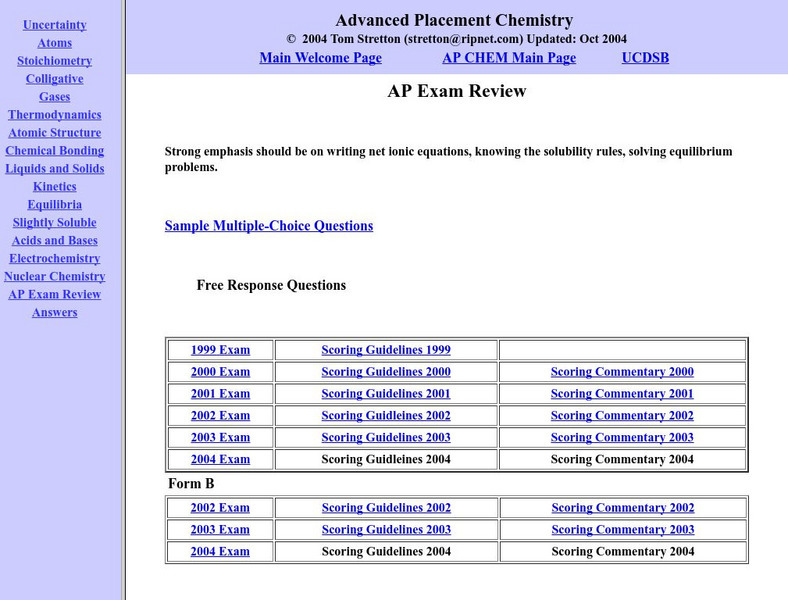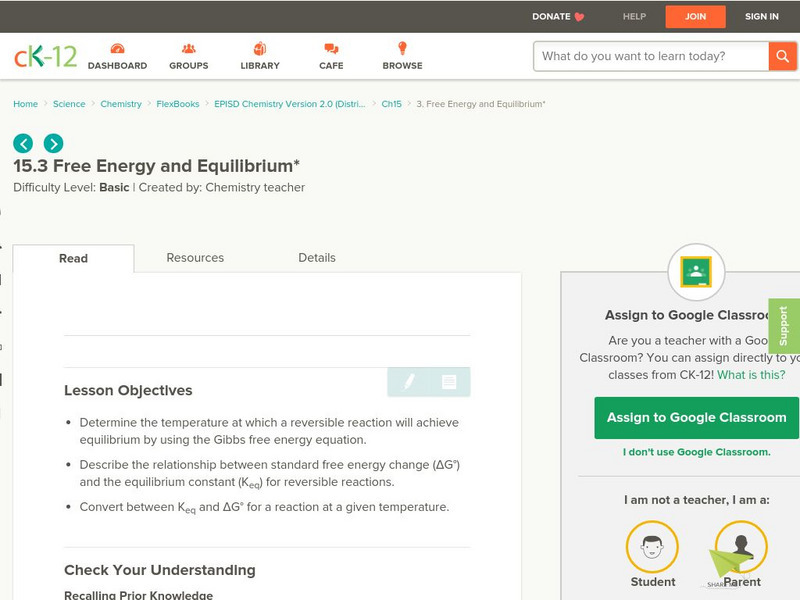Curated OER
Rate Equations: Equilibrium and Inflection Values
In this rate equation, learners are given 7 short-answer problems regarding functions, maximum and minimum values, equilibrium values, and inflection values.
Curated OER
Thermodynamics Homework Problem Set
In this chemistry instructional activity, students determine the equilibrium pressure of NO at each temperature listed. Then they explain why lowering the combustion temperature would have any effect on the NO emission. Students also use...
Curated OER
A LOT OF THIS FOR A LITTLE OF THAT
Students describe the import and export of agricultural products and gain a comprehension of the concept of supply and demand. They discuss exports and imports. Students have small world maps on each desk, they identify the countries...
Curated OER
Surpluses, Shortages, and Equilibrium
Students review and discuss the meaning of equilibrium. As a class, they participate in a game of "The Price is Right" in which they guess the true market price of various items. They explain how shortages and surpluses tend to force...
Curated OER
Establishing Hardy-Weinberg Equilibrium
Students study how Hardy-Weinberg Equilibrium was established and what assumptions and conditions are necessary to reach Equilibrium. They record class data on their charts. Frequencies are calculated.
Curated OER
Observing the Effect of a Change in Conditions on a System at Equilibrium by Applying Le Chatelier's Principle
Young scholars describe the Le Chatelier Principle. They participate in an experiment in which they observe the changes in an equilibrium system. They answer discussion questions to end the lesson.
Curated OER
How Can We Calculate an Equilibrium Constant?
High schoolers explain how equilibrium quantities are changed by temperature, pressure or different concentration of substances. They work together to complete equilibrium equations. They identify the relationship between absorption of...
Curated OER
Tightrope Trials
Students research the concepts of center of mass and how to make different things balance. They make symmetrical cut-outs of different "creatures" and experiment with how they balance on a tightrope of string.
Curated OER
Chemistry Practice
In this chemistry practice worksheet, students select the correct response to the given questions. Students apply knowledge about the states of matter, finding vapor pressure and atmospheric pressure.
Curated OER
Computer Science: Temperature
Students conduct an experiment on heat transfer and how it works. They record the temperature in whatever environment is surrounding the container and run experiments that use at least two different ambient temperatures. Students...
Curated OER
Balanced Forces
Young scholars are able to explain why football running backs benefit from having a lower center of gravity when opponents are trying to tackle them. They explain why racing cars are designed to have a low center of gravity. Students...
Curated OER
Perching Parrot
Pupils explore the concepts of center of mass and static equilibrium by seeing how non-symmetrical objects balance. They also analyze why all forces on an object must cancel out exactly for an object to be stationary.
Curated OER
Main Sequence Stars: A System in Equilibrium?
Fourth graders study the equilibrium of internal forces in a main sequence star.
Carnegie Mellon University
Chem Collective: Dna Binding Dyes Scenario
This activity explores the equilibrium of dyes that self-assemble into DNA templates. Students use knowledge of equilibrium and quantitative spectroscopy to explore different dyes that bind selectively to DNA molecules. In this activity,...
Massachusetts Institute of Technology
Mit: Open Course Ware: Intermediate Microeconomic Theory
An intermediate level course in microeconomics from MIT. Includes suggested readings, lecture notes, assignments, and exams.
Georgia Department of Education
Ga Virtual Learning: Chemistry: Kinetics and Equilibrium
Through informational text, interactive practice problems, virtual simulations, and video clips, students learn about reaction rates and equilibrium.
Georgia Department of Education
Ga Virtual Learning: Newton's Laws of Motion and Projectiles
Through informational text, interactive activities, practice problems, online labs, virtual simulations, and video clips, students learn about Newton's Laws of Motion.
University of Guelph
University of Guelph: Physics Tutorials: Torque and Rotational Motion
Tutorial on torque, rotational motion, and rotational equilibrium. Includes equations, concepts, example and practice problems.
University of Oregon
Virtual Laboratory: Thermodynamic Equilibrium
An interactive Java applet which depicts gas diffusion and emphasizes the importance of thermal equilibrium. Directions and challenges available.
Robert Schenk, PhD
Cyber Economics: Monopolistic Competition
E-learning site uses an example of "pushcarts on the beach" to demonstrate a monopolistically competitive market structure and how, as more firms enter the market, price, quantity, and deadweight loss are all affected.
Upper Canada District School Board
Tom Stretton's Advanced Placement Chemistry: Ap Exam Review
Use these sample multiple-choice questions to prepare and study for AP exam for Chemistry. A strong emphasis is on writing net ionic equations, knowing the solubility rules, solving equilibrium problems.
Econoclass
Econoclass: Frozen Price Game
This game helps students to understand the concepts of changing supply, changing demand, and equilibrium price, as the price of bags of ice changes after a hurricane has swept through a community.
CK-12 Foundation
Ck 12: Free Energy and Equilibrium
[Free Registration/Login may be required to access all resource tools.] Students determine the temperature at which a reversible reaction will achieve equilibrium by using the Gibbs free energy equation, and then describe the...
Georgia Department of Education
Ga Virtual Learning: Ap Chemistry: Kinetics and Equilibrium
Through interactive activities in a module format, students learn about kinetics, collision theory, reaction rates, and rate laws. They will calculate rate laws from experimental data, concentration and time, and half-life of a reaction....





